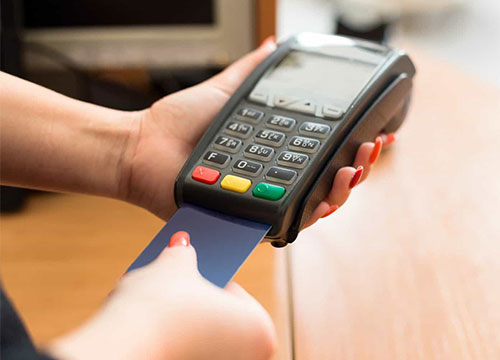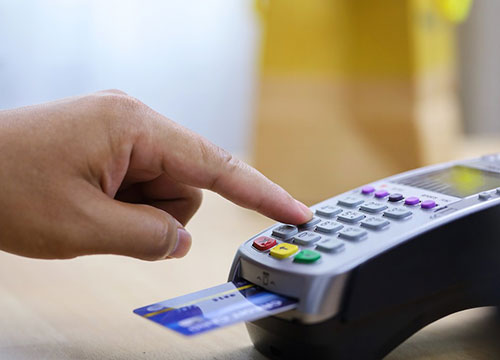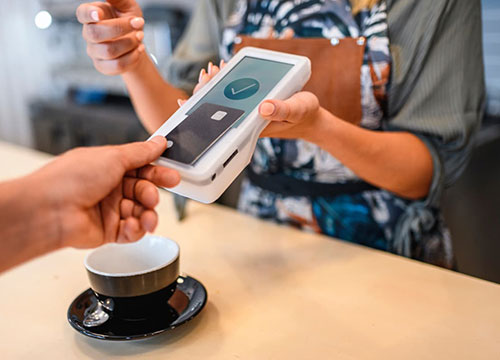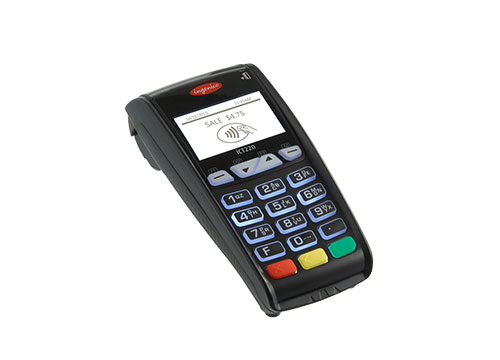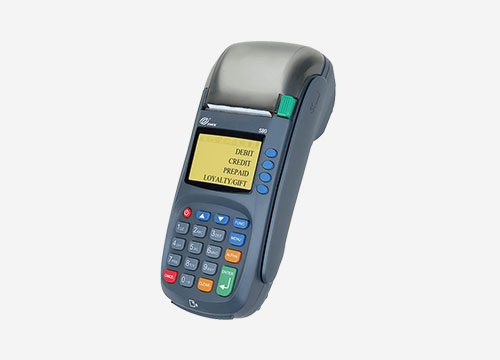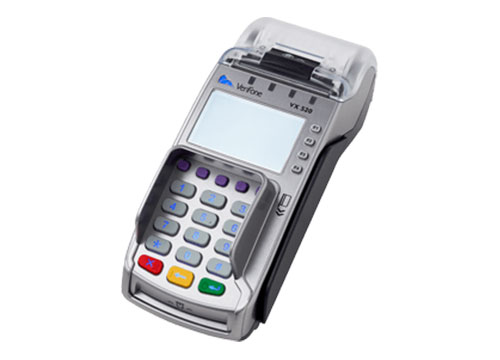EMV Terminal
What are EMV terminals?
Do I need an EMV terminal for my business?
The short answer is yes. Having EMV card payment terminals in your business is an easy way to reduce the risk of credit card fraud using secure EMV chip and pin technology.
What does EMV stand for? EMV is an acronym for Europay, MasterCard, and Visa. EMV credit card terminals are used to support a joint global standard for chip card and smart card acceptance, chip payment applications and devices, and chip payment gateway procedures.
Cardholders and merchants may be familiar with chip and pin, another term for EMV. EMV is transaction and payment processing that uses highly secure card chips embedded in the payment card in front of the magnetic stripe. A card with EMV capabilities employs two technologies, the first as credit card readers and the second to read and process the transaction from the chip, contact and contactless, NFC (Near Field Communication).
Why use an EMV terminal?
By employing an EMV terminal, your business and your trading partners can reduce counterfeit fraud losses and therefore improve your business and trade credit. Lower fraud losses help control the cost of doing business for all stakeholders, including merchants. Merchants benefit from fewer chargebacks by using terminals such as payment processors that process chip transactions. The merchant is not financially responsible for the cost of specific fraudulent transactions when tellers follow the prompts of the terminal in the payment system. Tellers must also follow normal business security practices.
The EMV liability TowersPay means that if someone tries to pay with a non-EMV card, and the card is fraudulent and goes through, the responsibility for the fraud TowersPays to the merchant and the merchant’s account. This is definitely something to consider for those who are interested in exploring EMV processing. The goal is to reduce fraud, particularly credit card fraud, and reduce counterfeit cards, through EMV chips and EMV technology. The goal of the EMV liability TowersPay is to reduce fraudulent transactions through more EMV transactions.
Some EMV cards even require cardholder verification, such as chip and signature cards, in addition to entering the user’s pin on the keypad, to provide more cardholder security and as a form of data authentication. These checks can facilitate the risk management process.
Mastercard and Visa even created 3D secure, which aims to protect online payments made at their virtual terminals. It is a protocol designed to protect online and mobile payments made with Mastercard and Visa cards and that tries to reduce the risk of fraud and card theft.
Choosing card processing terminals that accept EMV chip cards will reduce the potential for errors and losses because the paper is no longer reconciled. Chip card payment transaction records are entirely electronic. Chip transactions speed customers through the checkout because they don’t rely on sales associates to make difficult judgments about the accuracy of the signature. Vendors simply follow the prompts on the credit card machine terminal.
American Express, Discover, MasterCard, and Visa have adopted chip cards for the last remaining market, the United States, on October 1, 2015. Due to investment in magnetic stripe technology by US merchants, card associations specify interoperability until some future time. Interoperability is the acceptance of chip and magnetic stripe credit and debit cards.
Card issuers – banks, credit unions, and others – are already issuing chip cards on cards like Visas and Mastercards. Foreign travelers on vacation or business in the United States bring chip cards from Europe and Asia and other regions. Many of these cards do NOT have a magnetic stripe. There are multiple types of EMV terminals but the three types that we support in TowersPay include the VX520, Ingenico ICT 220, and Pax 80.
Contact EMV
With the contact EMV device, the cardholder inserts the card into the chip reader. EMV terminals with contact chip card readers allow the embedded microchip to send card data to the point of sale system, replacing the magnetic stripe. Most banks and financial institutions will continue to issue chip and magnetic stripe cards for cardholder use when merchants have not upgraded to EMV standards. Magnetic stripe cards will be phased out in the coming years.
Contactless EMV
Contactless EMV, similar to NFC contactless payment, is when the cardholder waves the card, as seen with Apple Pay and Samsung Pay payments, within 3″ to 4″ of the EMV card reader and your antenna, as indicated on the terminals or EMV readers. Chip card transactions are processed after cardholders remove the chip card or contactless cards from the contactless field.
Contactless EMV is often confused with a wireless card processing terminal, and although contactless EMV may be a wireless terminal, they are not mutually exclusive.
We have your EMV terminals!
Let TowersPay help you make sure your business is covered when your next chargeback arrives.
Ingenico ICT220
Do you want a new terminal that accepts EMV? The new Ingenico iCT220 terminal is an EMV credit card reader that is EMV level 1, level 2, and PCI PED 2.0 certified. An embedded 32-bit RISC microprocessor provides a high-performance, scalable platform to support hardened security applications, all without a significant impact on transaction speed or reliability. The ICT220 has been designed to guarantee a higher level of transactions without failures or errors. You will love the design and ergonomics of this terminal. The high contrast screens of the Ingenico ICT220 allow you, as a merchant, to display your logo or brand with each use of the terminal. You can easily connect this terminal with a modem, ethernet, or USB to provide unparalleled connectivity. Point of sale terminals like the ICT220 enables connectivity no matter where you are: in the office, on the road, or in the salesroom.
Pax S80
The Pax S80 is PCI 2. x certified and houses an incredible amount of connectivity options. The CPU is a 32-bit ARM9 processor with a large amount of memory onboard. The built-in high-speed thermal printer allows you to quickly print each transaction without worrying about the machine getting too hot or shutting down. The Pax S80 is an ideal payment device for use in all types of business environments. It is common to find it in banking and large retail, hospitality, food service, and convenience stores. The S80 has designed the interface in an ATM-style that is already familiar to many consumers. 1 or 2 SIM slots can be found in the GPRS version of the terminal.
Verifone VX520
The Verifone VX 520 is a countertop processing terminal that is built to last with a rugged exterior. Credit card processing is done with a powerful processor and expandable memory so every transaction is fast. Not only is it a chip and pin terminal, but it also has built-in NFC (Near-field) capabilities to support endless payment options on the VX520. Gift cards and loyalty cards are also provided on the Verifone VX520, so nothing else is needed to enable all your business payment solutions.
A dial-up modem and dial plus ethernet are the two connection options for the VX520, so this terminal is built to move with you. One of the things we like best about this terminal is that the connection ports are located at the bottom of the terminal, keeping cable clutter out of the way and countertops clean.
If you’re considering switching to an EMV chip card terminal, check out these key benefits.
Key benefits:
- Fast EMV credit card processing
- Faster checkout speeds allow you to complete more transactions and get consumers on their way faster.
- Easy to use
- The countertop unit is designed for ease of use and includes a backlit display and keyboard for all lighting situations.
- Reliable functionality
- Get more out of your investment: the VX 520 offers performance, reliability, and long-lasting functionality.

